The Conciergerie, Paris- History and Tour of a Palace Turned Prison
Purchases made through links earn us a small commission, at no extra cost to you.
When I was in high school, my favourite subject was Social Studies. I loved learning about history and one of my favourite units was the French Revolution.
I remember learning about the economic crisis, the execution of King Louis XVI in Place de la Concorde, and the subsequent Reign of Terror in which tens of thousands of people died under the guillotine, including Queen Marie Antoinette. It’s because of my interest in the French Revolution that I was keen on visiting the Conciergerie during my 4 days in Paris.
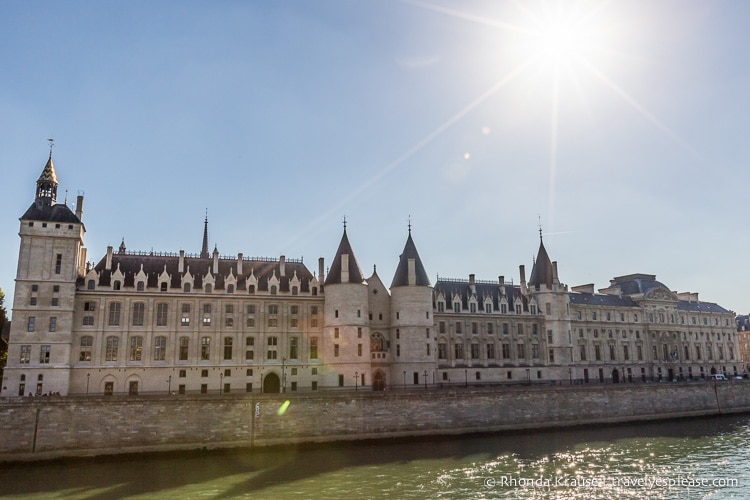
What is the Conciergerie?
The Conciergerie is the the oldest remaining part of the Palais de la Cite, a royal palace that was home to the kings of France from the 6th to the 14th century.
After the king moved his residence, the Conciergerie continued to house the kingdom’s administrative institutions, such as the chancellery and French Parliament. Eventually part of the building was converted to a prison that became the main penitentiary in Paris. The Conciergerie is perhaps best known for its use during the French Revolution, when it was the last stop for prisoners before execution.
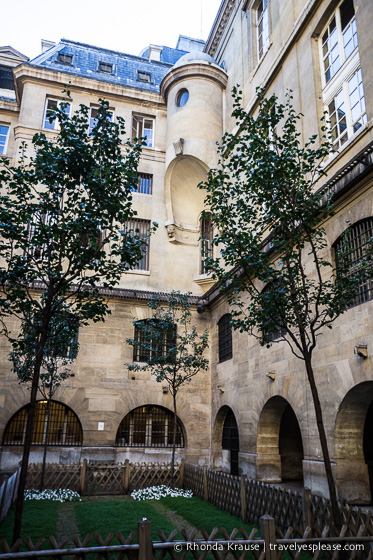
The Conciergerie is now listed as a national heritage site (monument historique). Much of the building is still used for law courts, but a small part is open to visitors who can tour sections of the old prison.
History of the Conciergerie- From Palace To Prison
Paris’ former royal palace was converted to a prison long before the revolution, but it eventually became a symbol of the ten month Reign of Terror as hundreds of prisoners were taken from the Conciergerie to be executed by guillotine. Here is a brief history of the Conciergerie and its transformation from palace to prison.
The Palace- Residence of the Kings of France
The first French king, Clovis, established his royal residence on Ile de la Cite way back in the 6th century. Fast forward five centuries and Hugues Capet, the first Capetian king, would be establishing his government in the Conciergerie (then known as the Palais de la Cite), thus becoming the seat of royal power. The Conciergerie would remain the seat of the medieval Kings of France up until the 14th century.
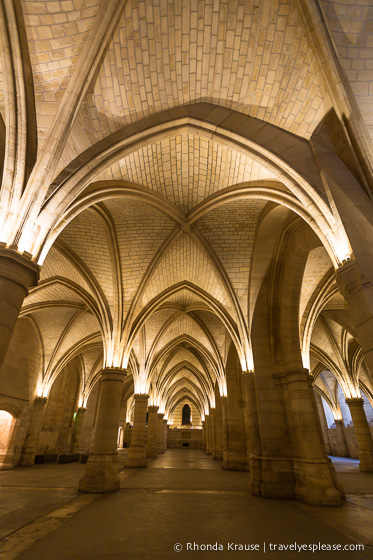
Over the years, the palace was expanded and more heavily fortified, eventually becoming a prestigious symbol of the monarchy. Improvements were made until the 14th century when Charles V decided to abandon the palace in favour of the Louvre. No longer a royal residence, the palace continued to serve administrative functions.
Now that Charles V was living in the Louvre, he had to appoint a concierge to manage the palace. The concierge was a very high ranking position, so important that when part of the palace was converted to a prison in 1391, it took its name from the ruling office.
The Prison- Symbol of Terror
The Conciergerie’s inmates were a mixture of common criminals and political prisoners. Prisoners were often treated very differently depending on their status and wealth.
Those who were very influential or wealthy often got a private cell with a bed and such luxuries like a desk and reading and writing materials. If prisoners of a lesser status could afford it, they could buy a cell with a simple bed. The poorest prisoners suffered in terribly unhealthy and crowed conditions, confined to damp, dark cells infested with disease spreading vermin. These conditions led to the Conciergerie’s reputation of being the toughest of all prisons.
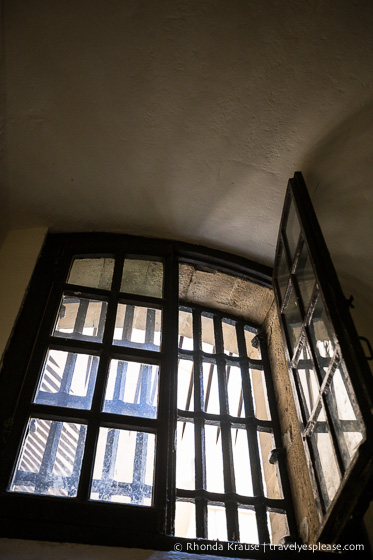
The Conciergerie was the final stop for over 2,700 people who were executed by guillotine during the revolution. Trials and executions happened quickly, often in the same day. Famous prisoners include Marie Antoinette, Georges Danton and the poet André Chénier.
Tour of the Conciergerie
When you first enter the Conciergerie, you will be in the Hall of Men-at-Arms. It is one of the largest surviving medieval parts of the Conciergerie. I thought this simple room was so beautiful and loved how the four rib vaulted naves were gracefully lit with white light.
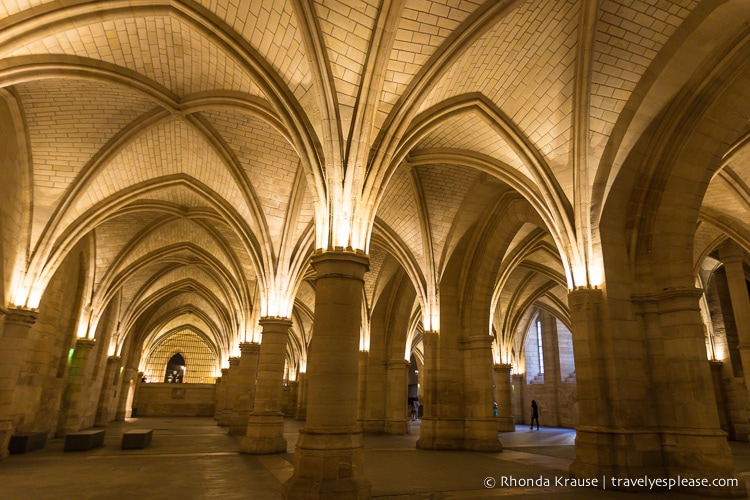
At the end of the Hall you will pass by the Guardroom and walk through the Rue de Paris to the Prisoner’s Gallery. Here you can see reconstructions of the Clerk’s office, the concierge’s office and the Grooming Room, where prisoners were stripped of their belongings before execution.
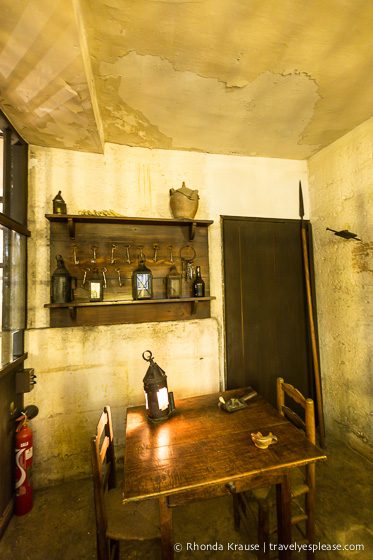
Upstairs you can see a list of prisoners held in the Conciergerie during the Reign of Terror (sadly, it’s a very long list). There is also a display of objects that recount what prison life was like in the Conciergerie.
Downstairs is the Girondins’ Chapel. Here 21 members of the radical group the Girondins, had their final feast before being executed in 1793.
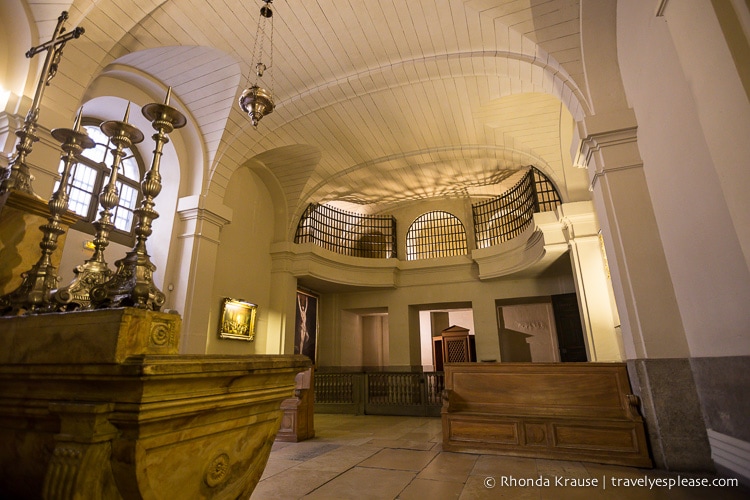
You can also see a recreation of Marie Antoinette’s cell. It sits partially on the site of her actual cell. There were two guards watching her at all times.
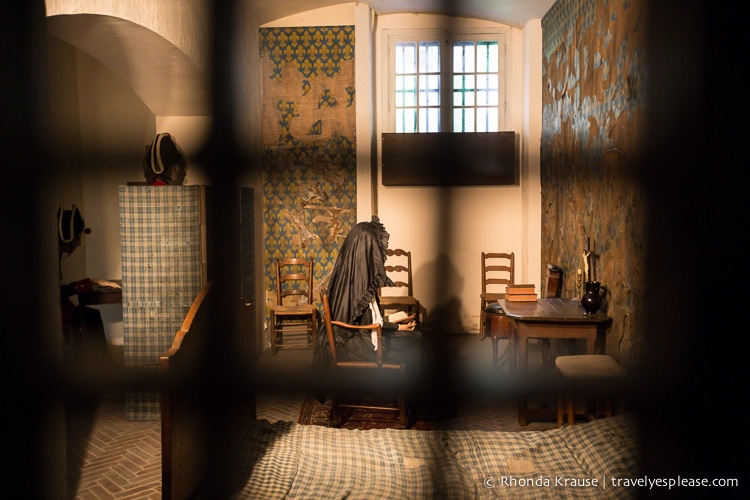
Outside you can visit the Women’s Courtyard. This is where condemned prisoners waited in groups of 12 to be carted off to the guillotine. The courtyard is surrounded by two levels of cells and still has the fountain where prisoners washed their clothes.
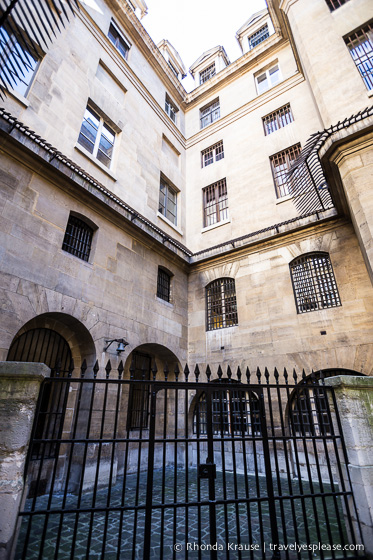
Final Thoughts About Our Visit to the Conciergerie
A tour of the Conciergerie showcases a dark side of Paris’ history. It was interesting to learn about the transition from palace to prison, and sobering to hear about tough conditions prisoners had to endure. While fascinating from a historical perspective, a visit to the Conciergerie was a contrast to Paris’ romantic atmosphere and grand monuments, giving us a more well-rounded view of Paris.
Tips for Visiting the Conciergerie
Location: The Conciergerie is part of the larger Palais de Justice, which also contains Sainte-Chapelle. You can find the entrance on Boulevard du Palais on the Ile de la Cite.
Hours: The Conciergerie is open every day from 9:30 am- 6:00 pm (closed May 1 and December 25). Last admission is 45 minutes before closing.
Admission Tickets: You must purchase an entry ticket and reserve a time slot to visit the Conciergerie (can be done online). Admission is €13.00 for adults and free for minors under 18. If you have the Paris Museum Pass admission is free. Here is a trusted site where you can buy digital tickets and have them immediately delivered to your smartphone:
Getting There: If taking the metro, Cite station (line four) will bring you right onto the Ile de la Cite. From there walk west to boulevard du Palais and then go south to reach the Conciergerie.
Area Accommodations: To search for hotels near the Conciergerie, please visit Booking.com, our trusted booking site that we use for all our trips. Accommodations booked through the included link earn us a small commission, at no extra cost to you, and help support this website. Thank you!
Information was updated January 2025, but can change without notice. Please confirm directly with the venue.
